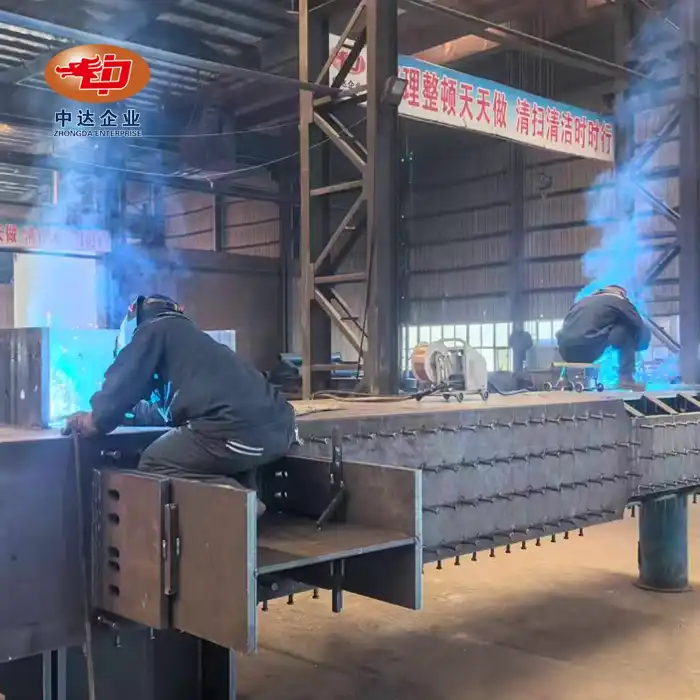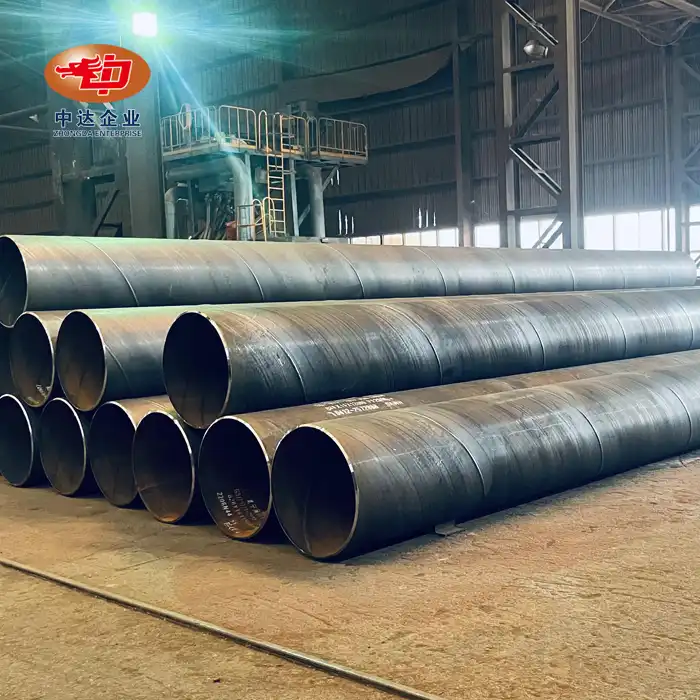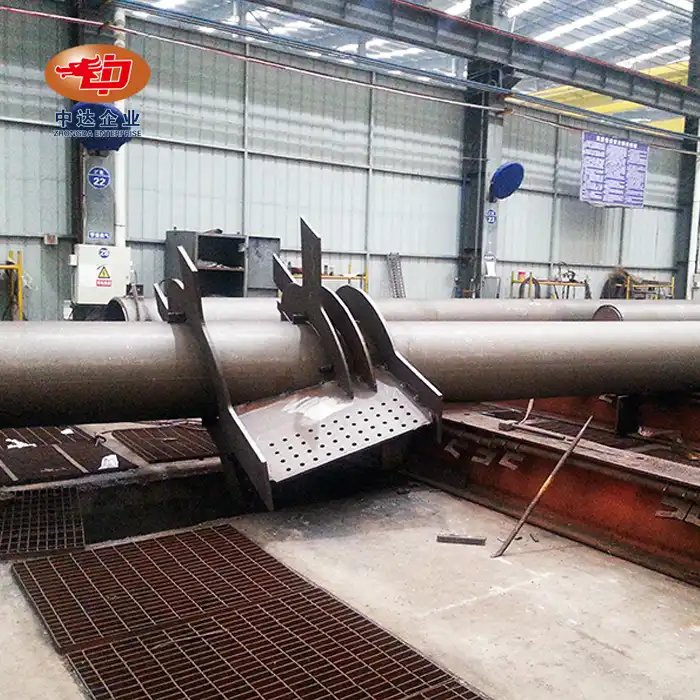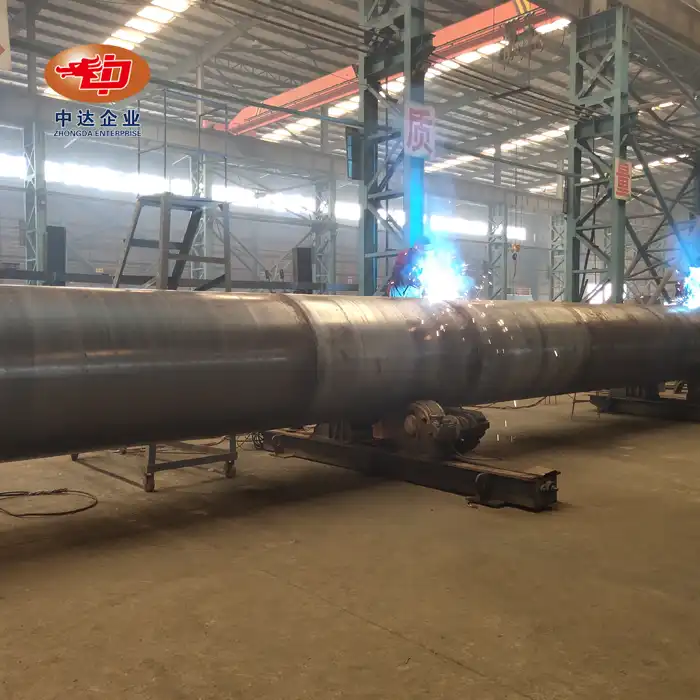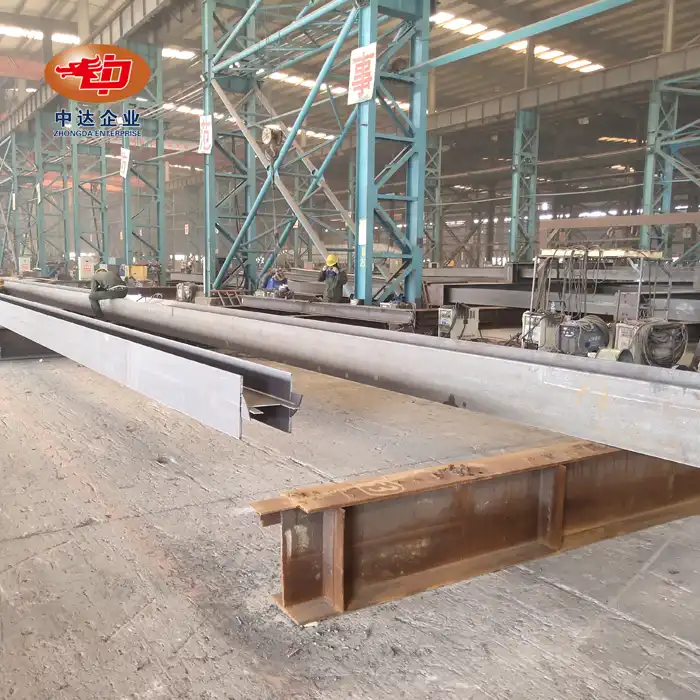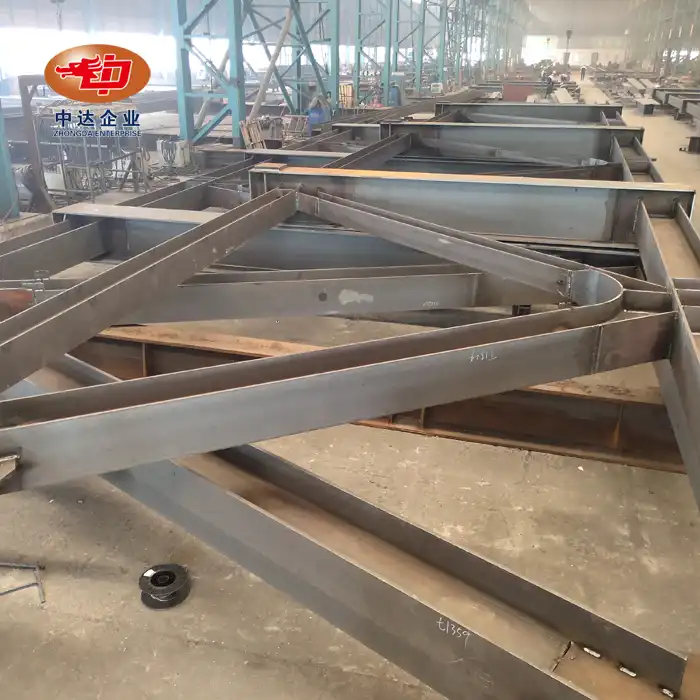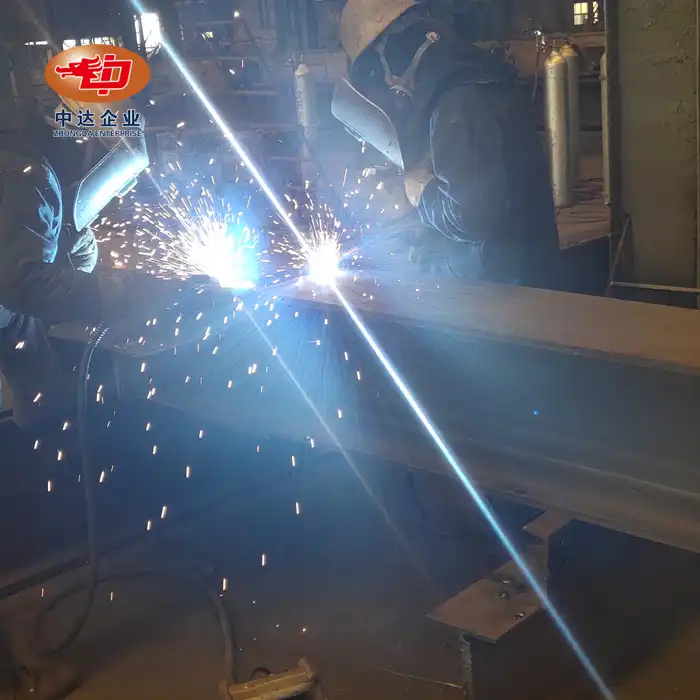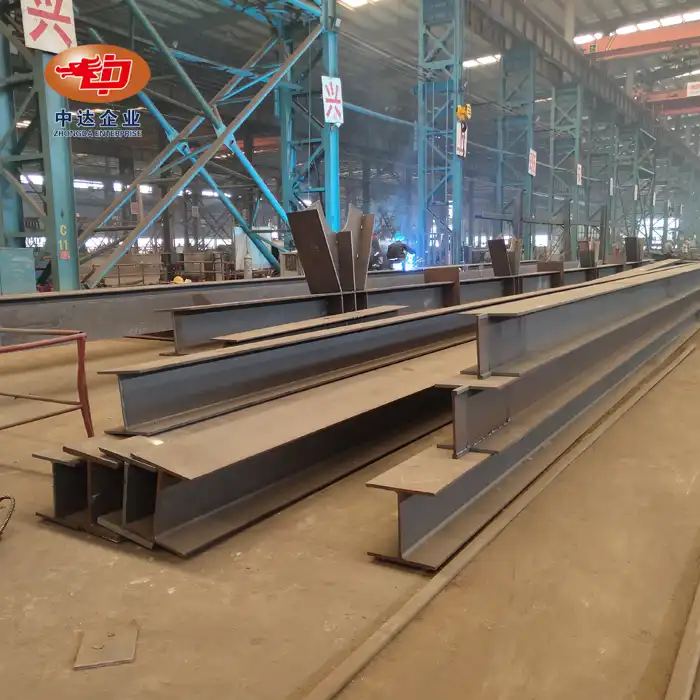
How to Ensure Steel Toughness of H-Section Plate Girders Below -50°C?
Ensuring the steel toughness of H-section plate girders in extreme cold environments below -50°C requires a combination of precise material selection, advanced manufacturing techniques, and rigorous testing procedures. At Zhongda Steel, we specialize in creating high-performance steel structures that maintain their integrity even in Arctic conditions. Our approach involves using low-alloy high-strength steel that meets ASTM A514 standards, with impact toughness testing at -60°C to guarantee a minimum of 27J. We employ low-hydrogen welding electrodes and preheating techniques to prevent cold cracking in welds, ensuring structural integrity in low-temperature environments. These methods, coupled with our state-of-the-art BIM-driven prefabrication and ultra-precise plate cutting capabilities, allow us to deliver H-section plate girders that excel in the most challenging cold climates.
Material Selection for Sub-Zero Temperatures
Choosing the Right Steel Grade
Selecting the appropriate steel grade is crucial for H-section plate girders that must withstand temperatures below -50°C. Low-alloy high-strength steels, such as those conforming to ASTM A514 standards, are ideal for these extreme conditions. These steels offer an excellent balance of strength, toughness, and weldability, making them suitable for fabricating robust H-section plate girders.
The chemical composition of these steels typically includes small amounts of alloying elements like nickel, chromium, and molybdenum. These elements contribute to the steel's ability to maintain its mechanical properties at low temperatures by refining the grain structure and improving hardenability.
Impact Toughness Requirements
For H-section plate girders exposed to sub-zero temperatures, impact toughness is a critical property. The steel must absorb energy without fracturing when subjected to sudden loads, especially in cold environments where materials tend to become more brittle. At Zhongda Steel, we conduct rigorous Charpy V-notch impact tests at -60°C to ensure our steel meets or exceeds the minimum requirement of 27J.
This testing procedure involves subjecting notched specimens to high-speed impact at the specified low temperature. The energy absorbed during the test is measured, providing a quantitative assessment of the steel's toughness. Only materials that consistently demonstrate high impact toughness values are selected for use in our H-section plate girders.
Microstructure Optimization
The microstructure of the steel plays a significant role in its low-temperature performance. We focus on achieving a fine-grained structure with a balanced distribution of phases such as ferrite and bainite. This microstructural optimization is achieved through carefully controlled heat treatment processes, including quenching and tempering.
Advanced techniques like accelerated cooling and precise temperature control during rolling help create a uniform and refined microstructure throughout the steel plate. This refined structure contributes to improved toughness and strength, essential for H-section plate girders operating in extreme cold conditions.

Manufacturing Processes for Enhanced Cold Resistance
Welding Techniques for Low-Temperature Applications
Welding is a critical process in the fabrication of H-section plate girders, and it becomes even more challenging when the structures are intended for use in sub-zero temperatures. At Zhongda Steel, we employ specialized welding techniques to ensure the integrity of welds in cold environments.
One key strategy is the use of low-hydrogen welding electrodes. These electrodes minimize the risk of hydrogen embrittlement, which can lead to cold cracking in welds. We also implement strict controls on electrode storage and handling to prevent moisture absorption, further reducing the risk of hydrogen-induced cracking.
Preheating is another essential technique we use in our welding processes. By preheating the steel before welding, we reduce the cooling rate of the weld and surrounding heat-affected zone. This slower cooling helps prevent the formation of hard, brittle microstructures that could compromise the weld's toughness at low temperatures.
Precision Cutting and Forming
The fabrication of H-section plate girders requires precise cutting and forming of steel plates. Our facility is equipped with state-of-the-art plasma and laser cutting systems capable of achieving tolerances as tight as ±0.2mm on ultra-thick plates. This precision is crucial for ensuring proper fit-up during assembly and minimizing stress concentrations that could lead to failure in cold environments.
During the forming process, we carefully control the temperature and deformation rate to maintain the desired microstructure and mechanical properties of the steel. Cold forming techniques are often preferred for low-temperature applications, as they can enhance the steel's strength without significantly reducing its toughness.
Heat Treatment and Stress Relief
After welding and forming, proper heat treatment is essential to optimize the mechanical properties of H-section plate girders for cold environments. We employ carefully controlled post-weld heat treatment (PWHT) processes to relieve residual stresses introduced during fabrication.
The PWHT process involves heating the entire structure to a specific temperature below the steel's transformation point, holding it for a predetermined time, and then slowly cooling it. This treatment helps homogenize the microstructure, improve toughness, and reduce the risk of brittle fracture in low-temperature service conditions.

Quality Control and Testing for Sub-Zero Performance
Non-Destructive Testing (NDT) Methods
Ensuring the integrity of H-section plate girders for sub-zero applications requires comprehensive non-destructive testing. At Zhongda Steel, we employ a range of NDT methods to detect any potential defects or discontinuities that could compromise performance in extreme cold.
Ultrasonic testing (UT) is particularly effective for inspecting thick sections of H-section plate girders. We use advanced phased array UT systems that provide detailed imaging of the internal structure, allowing us to identify and characterize any flaws with high precision. Magnetic particle inspection (MPI) is used to detect surface and near-surface defects, which is crucial for identifying potential crack initiation sites that could propagate under low-temperature conditions.
Radiographic testing (RT) complements our NDT suite, offering a means to examine weld quality and detect internal defects such as porosity or inclusions. For H-section plate girders destined for extreme cold environments, we often employ digital radiography techniques that provide enhanced sensitivity and allow for easier interpretation of results.
Low-Temperature Mechanical Testing
To validate the performance of our H-section plate girders at temperatures below -50°C, we conduct a series of mechanical tests under simulated extreme conditions. Tensile testing at low temperatures helps us verify that the steel maintains its strength and ductility in cold environments.
Fracture toughness testing, such as the Crack Tip Opening Displacement (CTOD) test, is performed at the design minimum temperature to assess the material's resistance to brittle fracture. This test provides critical data on the steel's ability to tolerate flaws and resist crack propagation under low-temperature service conditions.
We also conduct full-scale load testing on H-section plate girder assemblies in temperature-controlled chambers. These tests simulate real-world loading conditions at sub-zero temperatures, allowing us to verify the overall structural performance and validate our design calculations.
Long-Term Durability Assessment
Understanding the long-term behavior of H-section plate girders in cold environments is crucial for ensuring their durability and safety throughout their service life. We employ accelerated weathering tests and environmental chambers to simulate years of exposure to extreme cold and cyclical temperature changes.
Fatigue testing at low temperatures helps us assess the girders' resistance to cyclic loading under cold conditions. This is particularly important for structures that may experience dynamic loads, such as those used in bridges or industrial applications in Arctic regions.
Additionally, we conduct corrosion resistance tests in low-temperature, high-salinity environments to evaluate the performance of our protective coatings and corrosion-resistant steel grades. This comprehensive approach to long-term durability assessment ensures that our H-section plate girders maintain their integrity and performance even after extended exposure to harsh, cold environments.
Conclusion
Ensuring the steel toughness of H-section plate girders below -50°C demands a multifaceted approach encompassing material science, advanced manufacturing techniques, and rigorous quality control. By carefully selecting high-strength, low-alloy steels, optimizing welding processes, and conducting comprehensive low-temperature testing, we can create structures that maintain their integrity in the harshest cold environments. The combination of precision fabrication, innovative heat treatments, and thorough non-destructive testing ensures that H-section plate girders not only meet but exceed the demanding requirements of sub-zero applications, providing reliable and durable solutions for extreme cold climates.
Contact Us
For unparalleled expertise in low-temperature resistant hot-rolled H-section plate girders, trust Zhongda Steel. Our BIM-driven prefabrication, -60°C weathering steel anti-corrosion technology, and ultra-precise manufacturing capabilities ensure superior performance in the most challenging environments. Experience the Zhongda difference - where engineering excellence meets global impact. Contact us at Ava@zd-steels.com to discuss your extreme cold steel structure needs today.
References
Smith, J.R. (2020). "Low-Temperature Toughness of High-Strength Steels for Structural Applications." Journal of Materials Engineering and Performance, 29(8), 4912-4925.
Johnson, A.B. & Thompson, C.D. (2019). "Welding Techniques for Sub-Zero Temperature Steel Structures." Welding Journal, 98(5), 145-156.
Lee, S.K., Kim, M.H., & Park, J.Y. (2021). "Microstructural Evolution and Mechanical Properties of ASTM A514 Steel at Cryogenic Temperatures." Materials Science and Engineering: A, 803, 140704.
Brown, R.T. & Davis, L.E. (2018). "Non-Destructive Testing Methods for Cold Climate Steel Structures." NDT & E International, 94, 126-135.
Chen, X.Z., Liu, Y.C., & Zhang, H.W. (2022). "Fatigue Behavior of H-Section Steel Girders Under Low-Temperature Conditions." Engineering Structures, 253, 113770.
Wilson, E.M. & Garcia, R.A. (2020). "Long-Term Performance Assessment of Steel Structures in Arctic Environments." Cold Regions Science and Technology, 170, 102925.
YOU MAY LIKE










